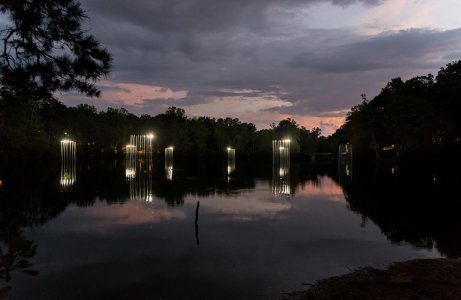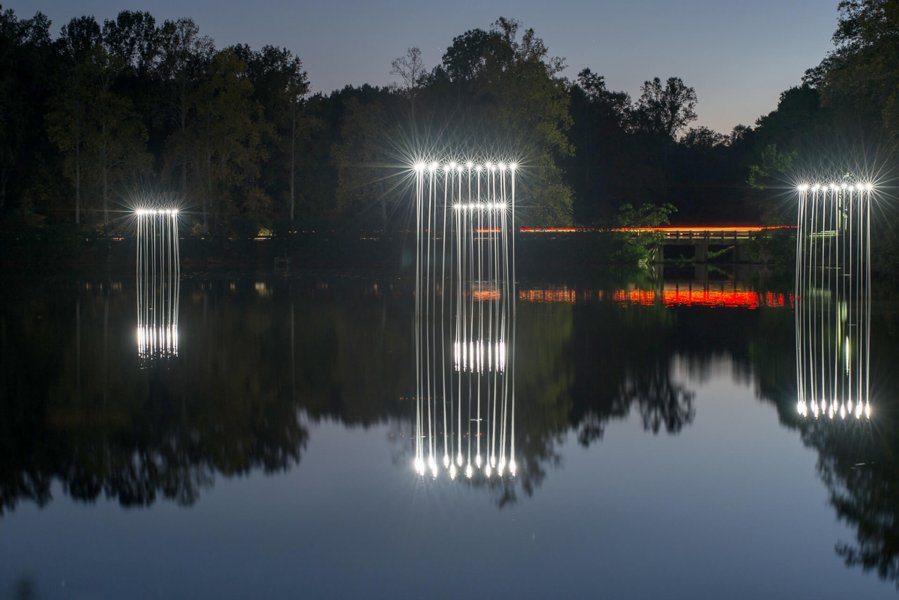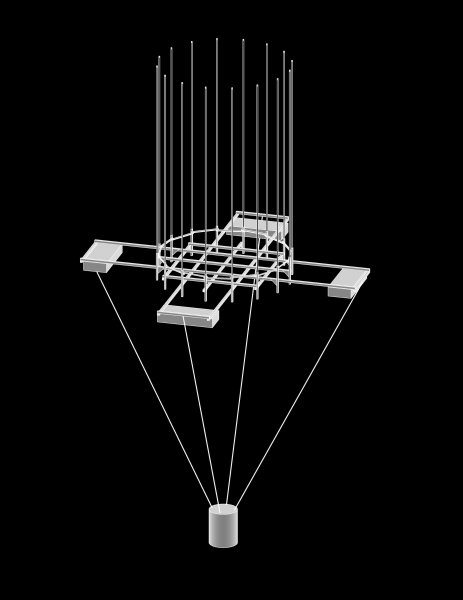On the other hand, water is an important element when it comes to developing and producing electrical parts, microelectronics or other electronic components. Nonetheless, it is the actual superficial aversion the two have to one another that makes the "Islands of Light" installation so interesting. Especially when the islands appear to be floating on the surface of the lake while a significant portion actually lies beneath the water.
The eight islands of light arranged in an enormous ellipse are floating in the middle of a lake in Duncan Park in Spartanburg/US. Each island consists of 16 thin fibreglass rods arranged vertically in a circle, which are reminiscent of reeds moving in the breeze. The rods are topped with white LED lights that are controlled to move synchronously through each of the circular structures. Each of the islands on its own, and all the islands together, generate a series of discreet and coherent lighting sequences across the lake. The support frames for the altogether 128 "luminous reeds" are below the water surface. They consist of aluminium profiles, floatation devices, chains and a concrete anchor; all designed by students from the Daniel Morgan Technology Center, who created the working prototype that became the blueprint for the island structures.
The installation merges technology and nature, and gives rise to a light sculpture on water. The light is reflected in the lake, the reed-like rods move in the wind, and the floating islands of electric light interact subtly and discreetly with the natural surroundings into which they are artistically intervening.
Design: Erwin Redl


